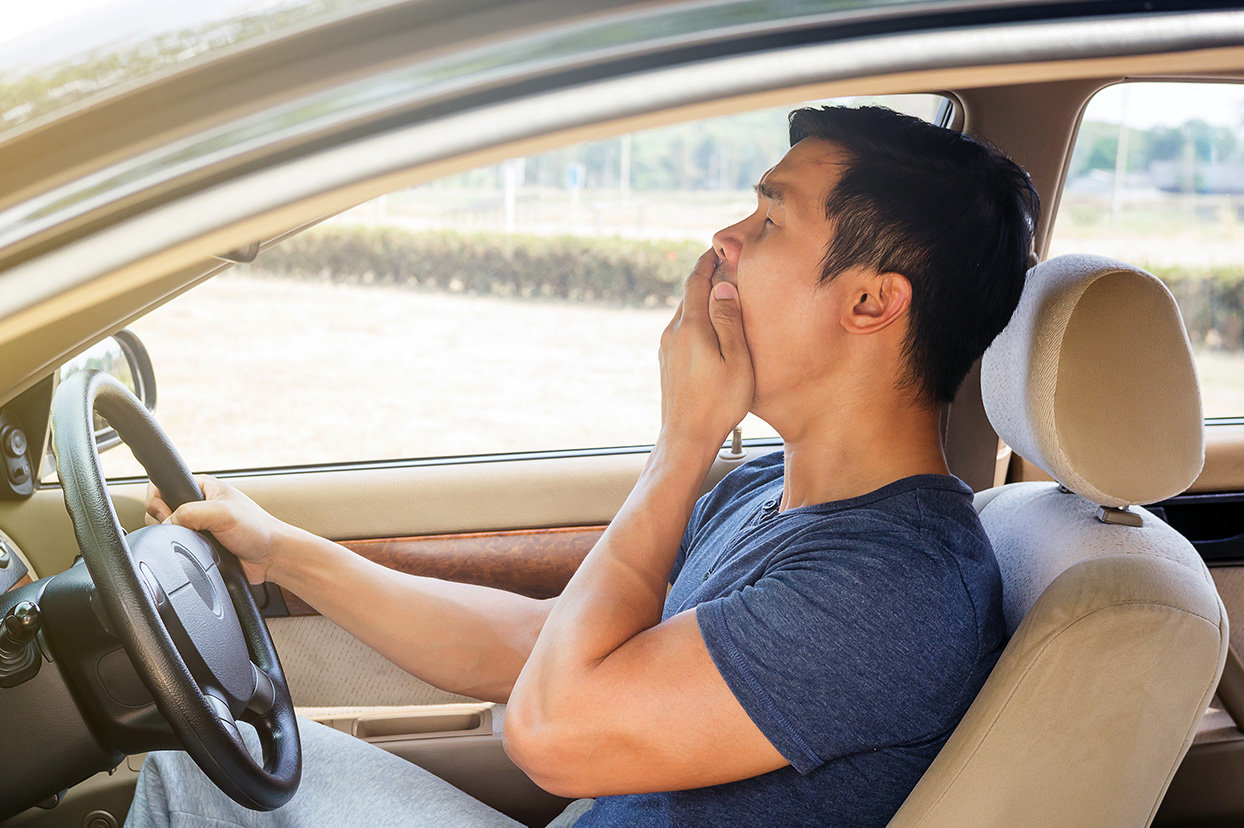November 5, 2018
The dangers of drowsy driving
Have you ever been driving home late at night and had to fight to keep your eyes open?
Or maybe you’ve felt your attention drift while driving to work in the morning?
It might seem commonplace, but driving in these situations can be dangerous. Even if you're not falling asleep at the wheel, drowsy driving poses a risk to your life and others.
Driving while drowsy can cause drivers to pay less attention to the road, slows their reaction time and affects the ability to make good decisions. It also impairs information processing and short-term memory and decreases performance, vigilance and motivation.
Accidents caused by drowsy driving are most common late at night and early in the morning, with early afternoon also being a peak time for drowsiness. Most crashes result from failure to brake or avoid an accident. It’s also common for drivers to veer off the road.
According to the National Highway Traffic Safety Administration, drowsy driving causes 100,000 crashes, 71,000 non-fatal injuries and 1,500 deaths per year. However, these are low estimates as drowsy driving can be difficult to track. It’s thought that up to 6,000 fatal crashes each year may be caused by drowsy drivers.
Underlying causes
Drowsy driving occurs when a driver is sleepy or fatigued. Excessive drowsiness is usually caused by sleep loss from restriction or too little sleep. This can result from interrupted or fragmented sleep or chronic sleep debt. Other factors include undiagnosed or untreated sleep disorders, the use of sedating medication and consumption of alcohol when already tired. These factors can compound on one another, and any combination of them increases the chances of causing a motor vehicle accident.
According to the National Sleep Foundation, people who sleep six hours a night are twice as likely to be involved in a drowsy driving crash than those sleeping eight hours or more, and people sleeping less than five hours increase the risk to four or five times.
Commercial drivers who operate vehicles such as tow trucks, tractor-trailers and buses have increased risk of drowsiness. Workers with long, rotating or night shifts, such as doctors, nurses, pilots and police officers, have a higher risk of drowsy driving, especially when driving home.
Warning signs
Warning signs include:
- Yawning
- Frequent blinking or rubbing your eyes
- Blurry vision
- Heavy eyelids or inability to keep eyes open
- Nodding off or trouble keeping your head up
- Difficulty remembering the past few miles or missing your exit
- Drifting from your lane or hitting a rumble strip on the side of the road
- Ending up too close to nearby cars or tailgating
- Daydreaming, difficulty focusing or wondering and disconnected thoughts
If you experience these signs, pull over to rest or change drivers. It’s not enough to just roll down the windows or turn up the radio.
Prevention
There are many ways to prevent drowsy driving:
- Get enough sleep
At least seven hours is the recommended amount of sleep for the average adult.
- Develop good sleeping habits
Go to bed and get up at the same time every day and make sure your bedroom is dark, quiet, relaxing and at a comfortable temperature. Remove electronic devices from your room, avoid large meals, caffeine and alcohol before bed and get some exercise.
- Talk to your physician about treatment options if you have a sleep disorder
Pay attention to potential symptoms, such as snoring or regularly feeling sleepy during the day. Many people with obstructive sleep apnea and narcolepsy go untreated.
- Avoid drinking alcohol or taking medications that make you sleepy
Check the label on medications or talk to your pharmacist. Common sedating medications include antidepressants, cold tablets and antihistamines.
- Avoid driving late at night or alone
Share driving with other passengers on long trips, pull over at rest stops and take a short nap or arrange for someone to give you a ride home after working a late shift. On long trips, schedule breaks or switch drivers every 100 miles or 2 hours.





